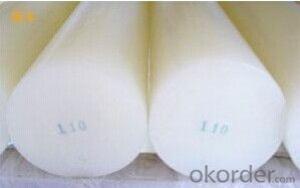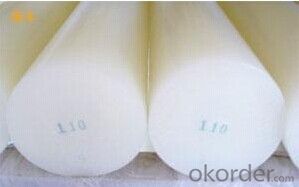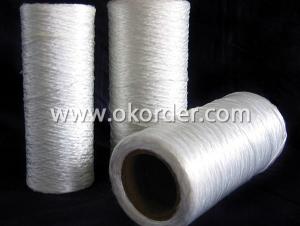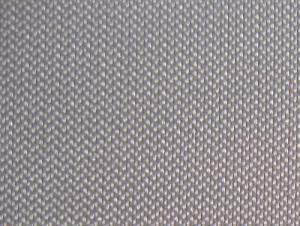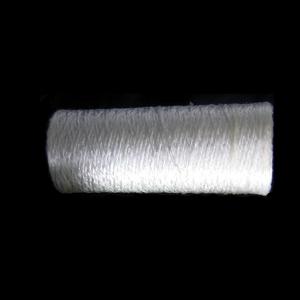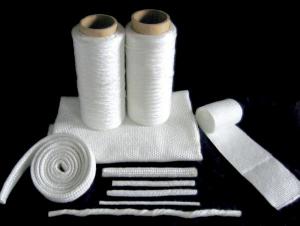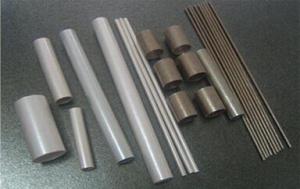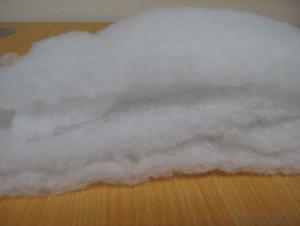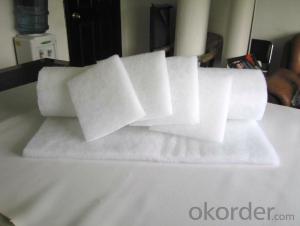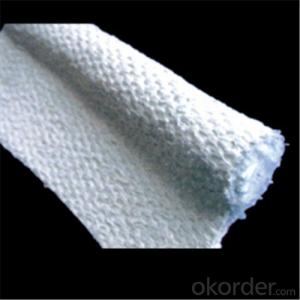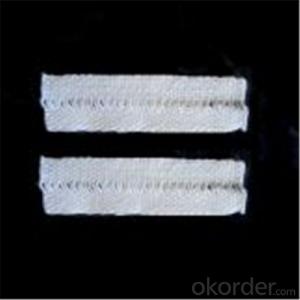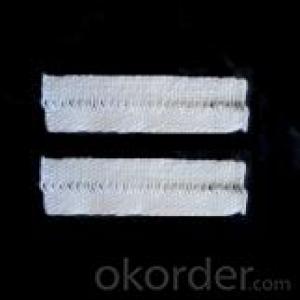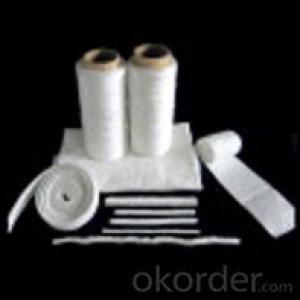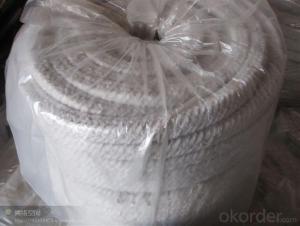Glass Fiber Textiles Reinforced Zirconia Ceramic Rod
- Loading Port:
- Qingdao
- Payment Terms:
- TT OR LC
- Min Order Qty:
- 500 m.t.
- Supply Capability:
- 2000 m.t./month
OKorder Service Pledge
OKorder Financial Service
You Might Also Like
Zirconia ceramic rods with precision slotted have the advantages of super hardness,high wear-resisting,good corrosion resistance ,high temperature tolerance,, high strength , precision process, high mechanical strength, good chemical stability, polishing surface and so on.
The following data as your reference .
Items | Unit | Data |
Density | g/cm3 | 6 |
Flexural Strength | MPa | 1000 |
Compressive Strength | MPa | 3000 |
Modulus of Elasticity | GPa | 200 |
Impact Resistance | MPa·m1/2 | 8 |
Weibull Modulus | m | 22 |
Vickers Hardness | HV0.5 | 1300 |
Thermal Conductivity | W/mk | <2 |
Highest Application Temperature | °C | 1000 |
Volume Resistivity at 20°C | Ω.cm20 | >1013 |
Dielertric strength | KV/mm | - |
Thermal expansion | X10-6/K | 10 |
Forming methods includes
1,drying pressing
2,isostatic pressing
3,hot pressing casting
The application of our product
1, ceramic shaft for aquatic animals equipment filter pump
2, Ceramic plunger for high pressure cleaner.
3,Wearlessness,resistant acid-base and high intensity ceramic assembly apply to petroleum ,chemical and chemical industry.
4,Wearlesness, corrosion resistance, thermostable parts apply to precision machine.
- Q: Are glass fiber textiles resistant to UV degradation?
- Glass fiber textiles exhibit a high level of resistance to UV degradation. The fibers themselves, being inorganic, do not degrade when exposed to the sun's ultraviolet (UV) radiation. This characteristic makes them well-suited for outdoor applications that involve prolonged exposure to sunlight. Even after extended periods of UV exposure, glass fibers retain their unique properties, such as their strength and durability. Moreover, it is possible to coat glass fiber textiles with materials that are resistant to UV radiation, thereby augmenting their overall ability to withstand UV degradation. This not only extends their lifespan but also enhances their performance in outdoor environments. Considering all these factors, glass fiber textiles are an excellent choice for applications that require protection against UV degradation.
- Q: Are glass fiber textiles fire resistant?
- Yes, glass fiber textiles are fire resistant.
- Q: How to distinguish carbon fiber, glass fiber, polyester cotton, aramid fiber, siro Phil fiber?
- Soft silk fiber is a kind of plant protein modified cellulose fiber, the raw material for plant protein and plant cellulose, green plants from renewable in nature, is a kind of environmentally friendly biodegradable functional fibers.
- Q: What are the limitations of glass fiber textiles?
- Before using glass fiber textiles, it is important to take into account their various limitations. Firstly, these textiles are quite fragile and can easily break when subjected to excessive stress or impact. This makes them unsuitable for situations where flexibility and resistance to breakage are essential. Secondly, glass fiber textiles have a relatively low tolerance for heat. They can melt or distort when exposed to high temperatures, which restricts their use in environments with extreme heat conditions. Moreover, these textiles are not fire-resistant and may contribute to the spread of flames. Additionally, glass fiber textiles have a tendency to absorb moisture, which can negatively affect their mechanical properties. This restricts their use in outdoor applications or environments with high levels of humidity, where moisture damage can compromise their integrity. Furthermore, working with glass fiber textiles can be challenging due to their sharp and abrasive nature. Handling them without proper protective equipment can cause skin irritation or respiratory problems. Therefore, it is necessary to take appropriate safety precautions when working with these textiles. Lastly, glass fiber textiles are generally more expensive compared to other materials such as cotton or polyester. This cost factor can be a limitation in situations where cost-effectiveness is crucial. In conclusion, while glass fiber textiles offer advantages such as high strength and chemical resistance, it is important to carefully consider their limitations in terms of brittleness, heat resistance, moisture absorption, handling challenges, and cost in order to make informed decisions about their usage.
- Q: Can glass fiber textiles be used in curtains or drapes?
- Yes, glass fiber textiles can be used in curtains or drapes. Glass fiber textiles, also known as fiberglass fabrics, are lightweight and have high tensile strength. They are commonly used in various applications such as insulation, reinforcement, and filtration. In the case of curtains or drapes, glass fiber textiles can provide several benefits. Firstly, they are fire-resistant, which makes them a safe choice for window coverings. Glass fiber textiles have a high melting point and do not catch fire easily, reducing the risk of accidents and promoting safety in homes or commercial spaces. Secondly, glass fiber textiles can provide excellent insulation properties. They can help in maintaining a comfortable indoor temperature by reducing heat transfer through windows. This can result in energy savings as it reduces the need for heating or cooling systems. Furthermore, glass fiber textiles can also offer privacy and light control. These fabrics can be manufactured with different levels of opacity, allowing for varying degrees of light transmission. They can be used to create sheer curtains that provide privacy while still allowing natural light to enter the room, or they can be used to make blackout curtains that completely block out light. Lastly, glass fiber textiles are durable and long-lasting. They are resistant to wear and tear, making them suitable for curtains or drapes that are frequently opened and closed. They are also resistant to mold and mildew, which can be beneficial in humid environments. Overall, glass fiber textiles offer a versatile and practical option for curtains or drapes. They combine safety, insulation, light control, and durability, making them a suitable choice for both residential and commercial applications.
- Q: What are the different techniques for joining glass fiber textile?
- Glass fiber textiles can be joined using various techniques, each with its own advantages and applications. Some commonly used techniques are: 1. Traditional sewing: By utilizing a needle and thread, glass fiber textiles can be stitched together. This versatile technique allows for flexibility and simple repair, making it ideal for applications that require frequent adjustments or disassembly. 2. Adhesive bonding: Two or more glass fiber textiles can be bonded together using adhesive. This technique creates a strong and durable bond, making it suitable for applications that demand high strength and rigidity. However, it may not be suitable for high-temperature environments or areas with chemicals or moisture. 3. Heat sealing: Heat is applied to the fibers to melt and fuse them together in heat sealing. This technique results in a robust and permanent bond, making it suitable for applications that require resistance to wear and tear and high strength. 4. Ultrasonic bonding: High-frequency vibrations generate heat, which then melts the glass fibers and bonds them in ultrasonic bonding. This fast and efficient technique is ideal for high-volume production and provides a reliable bond for applications that require durability and strength. 5. Mechanical fasteners: Glass fiber textiles can also be joined using mechanical fasteners such as screws, bolts, and clips. This technique allows for easy assembly and disassembly, making it suitable for applications that require frequent adjustments or repairs. Mechanical fasteners provide a strong and dependable bond for applications that require high strength and rigidity. In conclusion, the choice of joining technique for glass fiber textiles depends on specific application requirements, such as strength, durability, flexibility, and ease of assembly or disassembly. Considering these factors is crucial in selecting the most appropriate technique to ensure optimal performance and longevity of the joined textiles.
- Q: Are glass fiber textiles resistant to fraying?
- Yes, glass fiber textiles are generally resistant to fraying. Glass fibers are known for their high strength and durability, which makes them less prone to fraying compared to other materials like cotton or polyester. The manufacturing process of glass fiber textiles involves weaving the fibers together tightly, creating a strong and tightly-knit fabric structure. This helps to prevent the individual fibers from becoming loose and fraying. Additionally, glass fiber textiles often have a smooth surface, further reducing the likelihood of fraying. However, it is important to note that excessive wear and tear or improper handling can still lead to minor fraying in glass fiber textiles over time.
- Q: Are glass fiber textiles flexible?
- Yes, glass fiber textiles are flexible.
- Q: Are glass fiber textiles resistant to staining or discoloration from body oils or sweat?
- Yes, glass fiber textiles are resistant to staining or discoloration from body oils or sweat.
- Q: Can glass fiber textile be used in packaging materials?
- Yes, glass fiber textile can be used in packaging materials. Glass fiber textile is a versatile material that offers a range of benefits such as high strength, durability, and resistance to heat and chemicals. These properties make it suitable for packaging applications where strength and protection are important factors. Glass fiber textile can be used as reinforcement in packaging materials such as corrugated boxes, paperboard containers, and plastic films to enhance their strength and tear resistance. It can also be used as a lining material for packaging to provide additional protection against moisture, chemicals, or other external factors. Furthermore, glass fiber textile can be used in composite packaging materials, where it is combined with other materials like plastics or resins to create a strong and lightweight packaging solution. This combination allows for the development of innovative packaging designs that offer superior protection and sustainability. In summary, glass fiber textile can be effectively utilized in various packaging materials to enhance their strength, durability, and protective properties. Its versatility and performance make it a valuable choice for packaging applications where reliability and protection are crucial.
Send your message to us
Glass Fiber Textiles Reinforced Zirconia Ceramic Rod
- Loading Port:
- Qingdao
- Payment Terms:
- TT OR LC
- Min Order Qty:
- 500 m.t.
- Supply Capability:
- 2000 m.t./month
OKorder Service Pledge
OKorder Financial Service
Similar products
Hot products
Hot Searches
